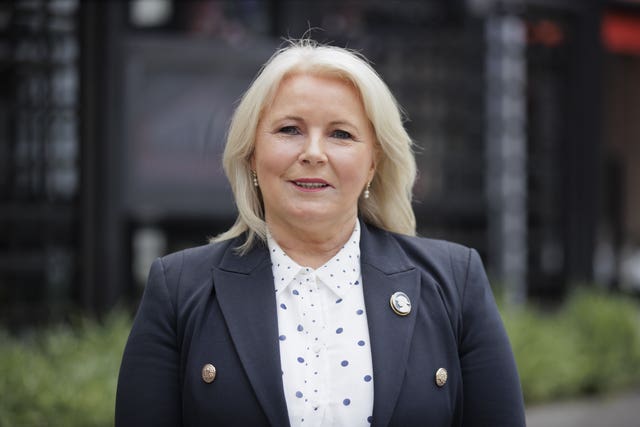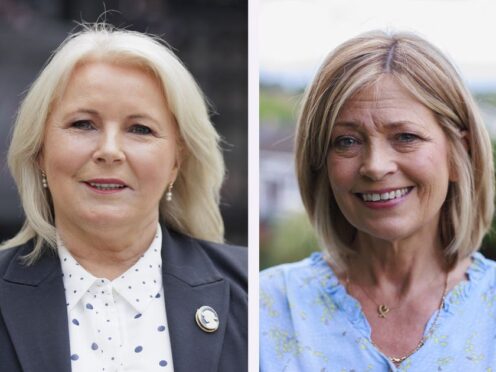The most westerly constituency in this week’s General Election is set for a familiar race between unionism and republicanism in what is often a photo finish.
Fermanagh and South Tyrone has been decided by fewer than 60 votes on three occasions since the turn of the century, with only four votes separating the leading contenders in 2010.
In 2024, two new parliamentary candidates are vying for the seat.
For the first time for more than two decades, the Sinn Fein name on the ballot paper will not be that of Michelle Gildernew. The MP for 21 of the last 23 years switched her focus to electoral politics south of the border earlier this year for an ultimately unsuccessful bid to become a member of the European Parliament.

The timing of the General Election denied her any opportunity to revert back to Fermanagh and South Tyrone when she missed out on Brussels.
In her stead, Sinn Fein is represented by Pat Cullen, the former general secretary of the RCN nursing union who led her colleagues on an unprecedented UK-wide strike over pay last year.
For the Ulster Unionists – invariably Sinn Fein’s main General Election challenger in the constituency – there is a different name on the ballot too.
Former UUP leader Tom Elliott, who battled Ms Gildernew in the last three polls, is not running this time, with the party opting for local councillor Diana Armstrong to take on the mantle.
As the daughter of another former party leader, the late Harry West, Ms Armstrong is steeped in the constituency’s unionist tradition.
“I’m born and bred here, I know the areas, I know the issues,” she said.
“And I do feel that I’m well placed to deliver a message of representation that will resonate with people in the district as a trusted voice.”
Ms Armstrong would not have the Northern Ireland-wide profile of Mr Elliott, who held the seat for two years between 2015 and 2017, but she insists she is well known where it counts – in the constituency.
For the councillor of eight years the most important issue in the campaign is representation, and the fact that Fermanagh and South Tyrone has not had a voice in the House of Commons for most of two decades because of an abstentionist MP holding the seat.
“For so long, this particular district has been lacking in investment, has been lacking and seen the withdrawal of public services, and really it is time that forgotten Fermanagh is no longer forgotten,” she said.
She added: “I will take my seat and it’s as simple as that. I will provide representation.”

The other main unionist parties in Northern Ireland – the DUP and TUV – had urged the UUP to join with them to back an agreed pro-Union candidate that had no party-political affiliations.
UUP leader Doug Beattie rejected the overtures, insisting his party, and specifically Ms Armstrong, was best placed to win the seat for unionism.
The other two parties ultimately opted not to field candidates and have urged voters to back Ms Armstrong, however, it remains to be seen whether their supporters will back her with as much gusto as they would have done a jointly agreed contender.
Boundary changes may also work against her, with a redrawing of the eastern edge of the constituency potentially being more beneficial to Sinn Fein. In a race of such usually fine margins, that could be crucial.
“I think there is some negative for my campaign within the boundary changes, the numbers have shifted,” said Ms Armstrong.
“But really, it is up to the people on the day to listen to the messages that I’m giving, to look at what I’m promoting in terms of optimism, growth, a voice that can deliver, a voice that will take their seat, and that will promise change and deliver change. Now that will take time, but that is my pledge to the people of Fermanagh and South Tyrone.”
Sinn Fein did not make Ms Cullen available for interview for this constituency profile.
Indeed, the candidate, who lives in Belfast, has kept a relatively low profile in the media since being involved in a debate with Ms Armstrong on BBC Radio Ulster in the middle of June.

During those exchanges, the UUP candidate challenged her rival to condemn the murder of nurses by republican paramilitaries during the Northern Ireland conflict, including the 1987 Enniskillen Remembrance Day attack by the IRA.
Ms Cullen did not do so, prompting criticism from victims’ representatives.
In response to Ms Armstrong’s request for condemnation, the former RCN chief replied: “Look, I’ve said very clearly those were very dark days. As a community nurse I’ve held the hands of many people who lived through those periods.
“I’ve felt, I’ve heard and I’ve seen their trauma. I’ve seen what it does to them. Let’s not go back there. Let’s move forward and bring prosperity and hope to the people.”
Sinn Fein president Mary Lou McDonald defended her party candidate, insisting she is a “good woman”. Ms McDonald said it was not a “progressive” way toward reconciliation to “seize on tragedies, on the hurt of the past” to try to “derail” a candidate.
The SDLP candidate in the election is former Enniskillen councillor Paul Blake.
He is also critical of Sinn Fein’s abstentionist stance, insisting the constituency needs to “get its voice back”.
“We can be a prominent place once again,” he said at the outset of the campaign.
“We have been the forgotten neighbours for far too long and I want to use this platform to raise the issues that are important to people.”
He added: “For years we haven’t been represented at Westminster. This has to change.”
Alliance Party candidate Eddie Roofe is keen to reject the characterisation of the contest as battle only involving unionism and nationalism.
He made history for the cross-community party last year when he became the first Alliance councillor ever elected in Fermanagh.
While the bookies might think otherwise, he insists he can contend on July 4.
“Elections in Fermanagh and South Tyrone are always constantly shoehorned into a two-horse, orange and green race. That is not the case,” he said.
“In the last local election, voters in Enniskillen responded to the positive and progressive Alliance message, and elected their first representative. That showed people if they vote Alliance, they can get Alliance.
“I am here to show we are the credible alternative, and I am someone who can represent and deliver for everyone across the constituency equally.”
The other two candidates in the six-strong field are Aontu’s Carl Duffy and Gerry Cullen from the Cross Community Labour Alternative.
